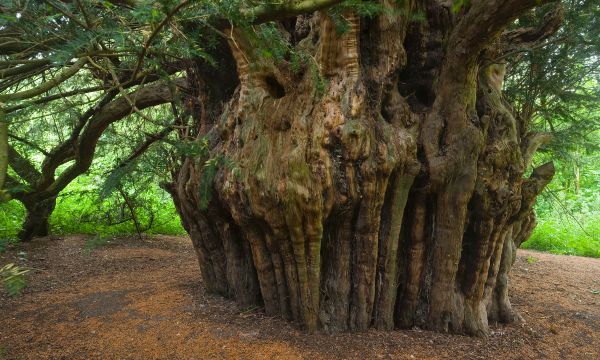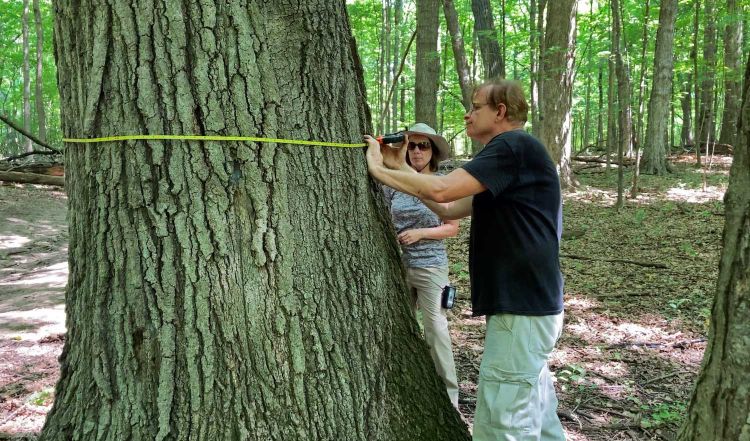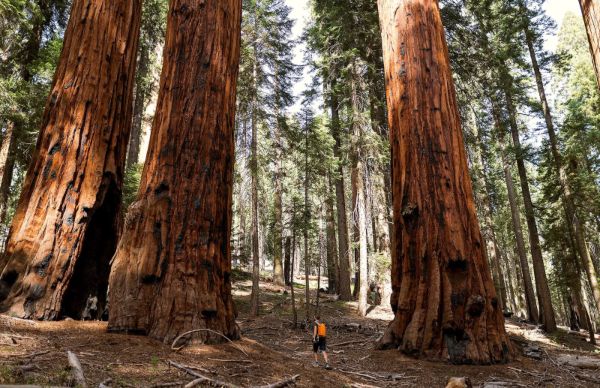Perhaps you are planning your next tree planting or landscaping project. If so, it helps to understand how long trees live so you can choose the most suitable trees to plant. The relatively long lifespan of a tree means you’ll get lots of aesthetic and ecological benefits, making trees a worthwhile investment. By understanding the factors that influence tree lifespan, you’ll know how to extend it with proper care and maintenance to get all those benefits that trees provide!
What Is a Tree’s Lifespan?
A tree’s lifespan can vary dramatically depending on its species, environment, and care. Some trees may only live for a few decades or less, while others can survive for centuries or even millennia. Generally, the lifespan of a tree ranges from 30 years for fast-growing species to over 5,000 years for the oldest known trees. Understanding these lifespans helps in selecting the right trees for specific landscaping needs.
What Tree Lives the Longest?
The tree species that holds the record for the longest lifespan is the Great Basin bristlecone pine (Pinus longaeva). These ancient trees, found in the high mountains of the western United States, can live for more than 5,000 years. One such specimen is the Methuselah tree in California, which is estimated to be over 4,800 years old. Other long-lived trees include the giant sequoia (Sequoiadendron giganteum), which can live for over 3,000 years, and the yew tree (Taxus baccata), known to live for several centuries to over a thousand years.

What Influences a Tree’s Longevity?
Species Genetics
The genetic makeup of a tree species affects its potential lifespan. Some species are genetically predisposed to live longer than others. For example, bristlecone pines and giant sequoias have evolved mechanisms that allow them to withstand harsh environmental conditions and resist diseases, contributing to their long lifespans.
Environment
The environment in which a tree grows significantly impacts its lifespan. Trees in urban areas may face more stress due to pollution, limited space, and human activities, which can reduce their longevity. On the other hand, trees in forests or protected areas with ideal soil, moisture, and climate conditions can live much longer.
Proper Planting
Proper tree planting is necessary for the long-term health and longevity of trees. This includes selecting the right location, ensuring proper soil conditions, and planting at the correct depth. Trees planted too deeply or in poor soil conditions may suffer from root problems and reduced lifespans.
Proper Pruning
Proper tree pruning or trimming can improve tree health by removing dead or diseased branches, promoting better air circulation, and reducing the risk of pest infestations. However, improper pruning can harm trees, making them more susceptible to diseases and reducing their lifespan.
Health Care to Prevent or Treat Pests and Diseases
Preventative health care, such as monitoring and treating for tree pests and diseases, is crucial for extending a tree’s life. Trees that receive regular health care are better able to withstand infestations and diseases that could otherwise shorten their lifespans.

How Long Do Trees Live with Proper Care?
With proper care, many tree species can live significantly longer than their average lifespan. For example, a well-cared-for oak tree can live for several centuries, while a healthy apple tree can produce fruit for over 100 years. Proper care includes regular watering, mulching, pruning, and monitoring for pests and diseases.
How Long Does it Take for a Tree To Grow?
The time it takes for a tree to grow depends on its species and environmental conditions. Fast-growing trees like the hybrid poplar can reach maturity in as little as 10-15 years, while slow-growing trees like the white oak may take several decades to mature. Growth rates are also influenced by soil quality, water availability, and climate. Read more about how long it takes for trees to grow!

Tree Species Life Expectancy
Conifers
Conifers, such as pines, firs, and spruces, generally have long lifespans. The Great Basin bristlecone pine is an extreme example, living for thousands of years. Other conifers, like the Douglas fir (Pseudotsuga menziesii) and the eastern white pine (Pinus strobus), can live for several hundred years under ideal conditions.
Broadleaf Trees
Broadleaf trees, which include many deciduous and evergreen species, have varied lifespans. Oak trees (Quercus spp.) can live for several centuries, while beech trees (Fagus spp.) may live for 150-300 years. Maples (Acer spp.) and birches (Betula spp.) typically have shorter lifespans, ranging from 100-150 years.
Fruit Trees
Fruit trees tend to have shorter lifespans compared to other trees. Apple trees (Malus domestica) can live for 50-100 years with proper care, while peach trees (Prunus persica) typically live for 10-20 years. Citrus trees (Citrus spp.) can live for 50-100 years, depending on the species and care.
Palm Trees
Palm trees have varied lifespans depending on the species. The coconut palm (Cocos nucifera) typically lives for 60-80 years, while the date palm (Phoenix dactylifera) can live for over 100 years. Some species, like the California fan palm (Washingtonia filifera), can live for up to 200 years.
How to Determine the Age of a Tree
Counting Tree Rings
The most common method for determining the age of a tree is counting its rings. This process, known as dendrochronology, involves examining a cross-section of the tree trunk. Each ring represents one year of growth, with the width of the rings indicating the growing conditions during that year. This method works best for temperate trees with distinct growth rings.
Carbon Dating
For very old trees or those without distinct growth rings, carbon dating can be used. This technique measures the amount of carbon-14, a radioactive isotope, in the tree’s tissues to estimate its age. While more complex and expensive than counting rings, carbon dating can provide accurate age estimates for ancient trees.
Measuring Circumference
Measuring the circumference of a tree’s trunk can provide an estimate of its age, especially when combined with species-specific growth rate data. This method involves measuring the girth of the tree at a standard height (usually 4.5 feet above the ground) and using known growth rates for the species to estimate its age. While less precise than ring counting, this method is non-invasive and useful for living trees.





